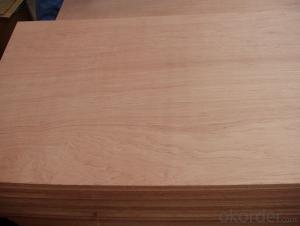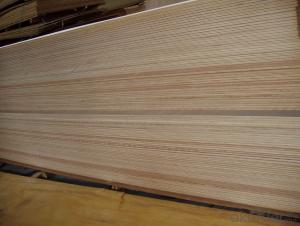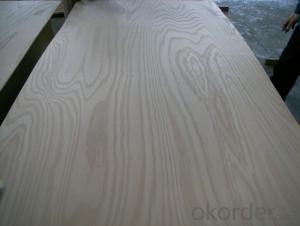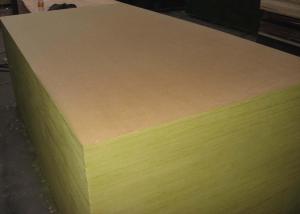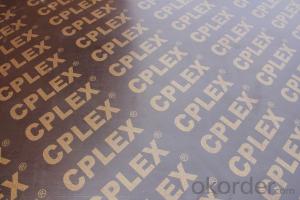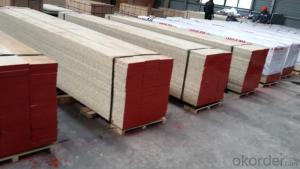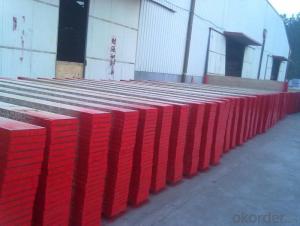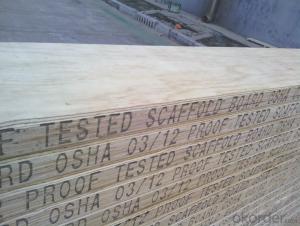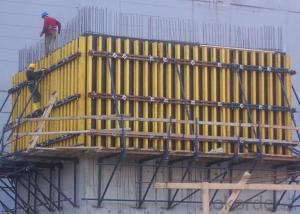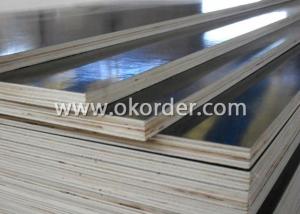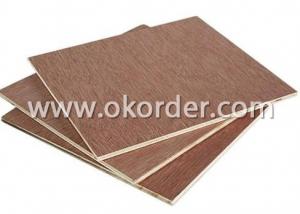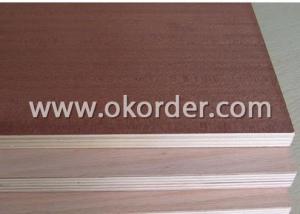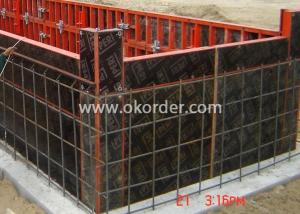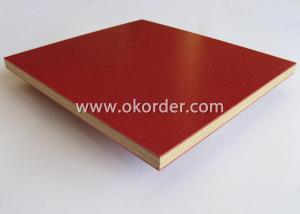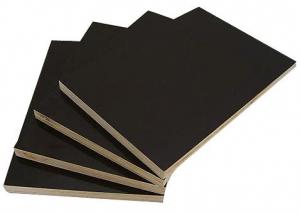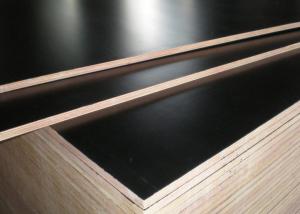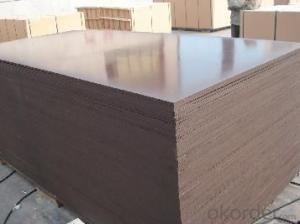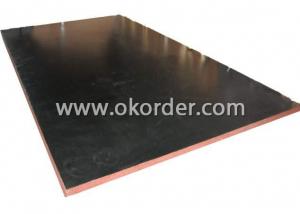Door Skin Poplar Core Plywood In Different Sizes
- Loading Port:
- Qingdao
- Payment Terms:
- TT OR LC
- Min Order Qty:
- 5000 pc
- Supply Capability:
- 5000000 pc/month
OKorder Service Pledge
OKorder Financial Service
You Might Also Like
Description of Door Skin:
Product Name: Slice Cherry plywood
Face/Back: Cherry
Core: Poplar,Hardwood,Pine,Birch,Eucalyptus,Combi etc
Size:1220×2440mm,1250×2500mm,1220×2150mm,1830×3660mm etc
Thickness: 2.7-30MM
Thickness Tolerance: +-0.1mm~0.3mm <=6mm< +-0.3mm~0.5mm >6mm
Glue:WBP/MR/MELAMINE/E0/E1/E2
Grade:BB/BB BB/CC CC/CC etc
Moisture: 8-14%
Process of Engineered Veneer Wood:
Log Selection
EV is generally produced from Chinese Poplar logs, grown locally either by local co-operatives,
or in registered plantation areas. The light natural colour and soft grain definition of Poplar makes it wellsuited to the production of EV. The process of converting timber into EV starts with the selection of logs, following which they are bought to the mill for processing. The timber is trimmed, sawn to length and debarked. The logs are now ready to be peeled.
Peeling of the Logs
The logs are mounted onto a giant lathe. Within minutes the logs are peeled into rotary veneers. This is achieved by pressing a rotating log towards a large blade, thinly peeling a continuous sheet of veneer off the log. The veneer is dried, stacked and then graded. It is now ready to be dyed.
Drying
EV veneers can be dryed to a consistent colour to suit the market requirement. The raw veneer leaves are stacked into a stainless steel cage. Once completely loaded, the stainless steel cage is immersed into a pressurized, heated vat that is filled with water soluble dry. This system ensures that each leaf is given the correct amount of time to allow the dry to completely penetrate each individual leaf of veneer. Once the desired colour has been achieved, the leaves are unloaded from the vat, dried and given a final inspection before going to the gluing stage.
Gluing
The gluing process is critical for the performance of the finished product. A layer of glue goes between each leaf of veneer, to bond the leave of veneer together. Once the stack has been laid up it is then put into a high pressure press to bond the leaves together, creating a large rectangular block.
Slicing of the Block
The block in now ready to be sliced into veneer leaves. Once the block has been produced, it is turned through 90 degrees, to present the end grain, then mounted to the slicing unit. The blade now runs across the end grain of the block, slicing thickness controlled leaves of veneer. The veneer leaves that are produced are approximately 0.4mm thick, and in 2440 x 1220 format. The veneer is now ready to be used as face veneer for Eucalyptus and Poplar core plywood products.
Packing Details of Door Skin:
MOQ: 40HQ
Packing Details: 20GP 8pallets/21M3
40GP 16pallets/42M3
40HC 18pallets/53M3
Payment Terms: 30%T/T in advance,70%L/C
Delivery Time: 15 to 20 days after receiving 30%T/T down payments
Technical Data of Door Skin:
Grade Description | AA | A | B | C | D | E | ||
Sapwood | No | No | Slight color difference | Slight color difference | Yes | Yes | ||
Heartwood | No | No | No | Slight color difference | Yes | Yes | ||
Color Streaks or Spots | Slight | Slight | Slight color difference | Slight color difference | Yes | Yes | ||
Color Variation | No | No | Slight | Slight | Yes | Yes | ||
Sharp Color Contrasts at Joints | No | No | No | Slight | Yes | Yes | ||
Type of Matching Book Matched Slip Matched Pleasing Matched |
Yes Specify -- |
Yes) Specify -- |
Specify Specify Yes |
-- -- -- |
-- -- -- |
-- -- -- | ||
Nominal Minimum Plain-S Width of Face Quarter 1/4 Componentsa Rotary | 152 mm 76 mm 152 mm | 127 mm 76 mm 127 mm | 76 mm 76 mm 102 mm | No Limit | ||||
Small Conspicuous Burls & Pin Knots-Combined Avg. Numbe | 2 per 1m2
| 4 per 1m2
| 6 per 1m2
| No Limit | ||||
Conspicuous Burls-Max. Size | 6.4 mm | 9.5 mm | 12.7 mm | No Limit | ||||
Conspicuous Pin Knots Avg. Number Max. Size: Dark Part Total |
No |
No |
3 per 3 m2 3.2 mm 6.4 mm | No Limit | ||||
Scattered Sound and Repaired Knots-Combined Avg. Number Max. Size-Sound Max. Size-Repaired Avg. No.-Repaired | No | No |
4 per 3 m2 9.5 mm 3.2mm 4 per 3 m2
|
3 per 1 m2 1 2.7 mm 12.7 mm 4 per 3 m2 |
4 per 1 m2 25.4 mm 19 mm 2 per 1 m2 |
No Limit 38 mm 25.4 mm 1 m2 | ||
Mineral Streaks | No; Maple, Slight | Slight
| Slight
| Slight | Yes | Yes | ||
Bark Pockets | No | No | Few to 3.2mmx25.4mm | Few to 6.4mmx50.8mm |
6.4mmx50.8mm |
Yes | ||
Worm Tracks | No | No | Slight | Slight | Yes | Yes | ||
Vine Marks | Slight | Slight | Slight | Yes | Yes | Yes | ||
Cross Bars | Slight
| Slight | Yes | Yes | Yes | Yes | ||

- Q:Does plywood contain formaldehyde?
- All plywood products will produce a small amount of formaldehyde. New products discharged from the most formaldehyde, the longer the use, the taste less, but are to be completely volatile for many years.
- Q:Distinguish between multilayer boards and plywood
- A group of veneers are usually in the direction of adjacent layers of wood grain perpendicular to the formation of each other, usually its table and the inner plate symmetrically arranged in the center layer or plate on both sides
- Q:Plywood quality requirements include appearance level, size, physical and mechanical properties of the three elements.
- Plywood should be shipped with the factory quality inspection department of product quality certification, specify the type of plywood, specifications, grade, bonding strength and moisture content.
- Q:Why is the plywood commonly used in the singular layer
- and the back of the stripes) from the beautiful and do not look good
- Q:Hard fiber board is also a density board
- the same texture direction. Adjacent two-layer veneer grain direction should be the same. The plywood should be the same tree.
- Q:The basic principle of plywood
- In order to improve the characteristics of natural wood anisotropy, so that the characteristics of plywood consistent, stable shape, the general plywood in the structure must meet two basic principles
- Q:What is the type of plywood editing?
- In order to make full use of forest resources to develop plywood production, make the best use of our country's newly developed national standards (draft approval) according to the use of adhesive pull
- Q:The structure of the plywood at the same time meet two basic principles
- the fiber direction and the table are parallel to the long core plate or the middle plate. When forming a slab, the panel and the backplate must face outward.
- Q:Now the market prospects for plywood
- so China's plywood enterprises and industry organizations must strengthen communication with importers, strengthen corporate self-discipline
- Q:Classification of plywood for construction
- if you want to make general indoor wood products, you can use E1 (or even E0) urea formaldehyde
1. Manufacturer Overview |
|
|---|---|
| Location | |
| Year Established | |
| Annual Output Value | |
| Main Markets | |
| Company Certifications | |
2. Manufacturer Certificates |
|
|---|---|
| a) Certification Name | |
| Range | |
| Reference | |
| Validity Period | |
3. Manufacturer Capability |
|
|---|---|
| a)Trade Capacity | |
| Nearest Port | |
| Export Percentage | |
| No.of Employees in Trade Department | |
| Language Spoken: | |
| b)Factory Information | |
| Factory Size: | |
| No. of Production Lines | |
| Contract Manufacturing | |
| Product Price Range | |
Send your message to us
Door Skin Poplar Core Plywood In Different Sizes
- Loading Port:
- Qingdao
- Payment Terms:
- TT OR LC
- Min Order Qty:
- 5000 pc
- Supply Capability:
- 5000000 pc/month
OKorder Service Pledge
OKorder Financial Service
Similar products
New products
Hot products
Hot Searches
Related keywords

